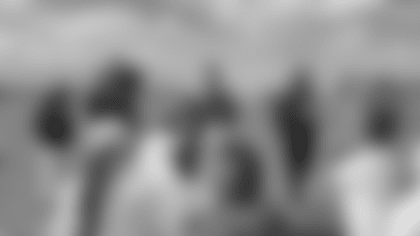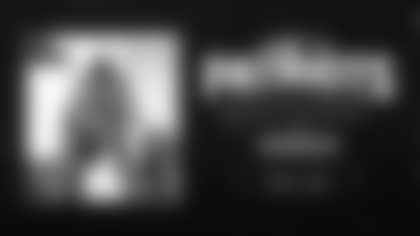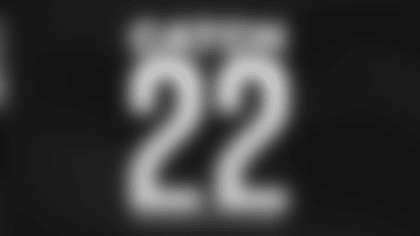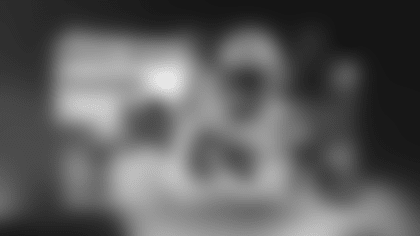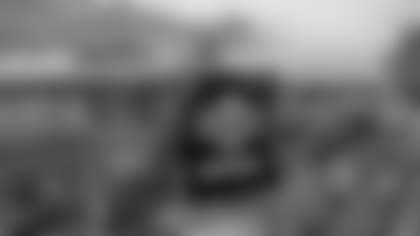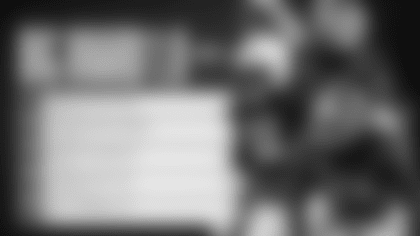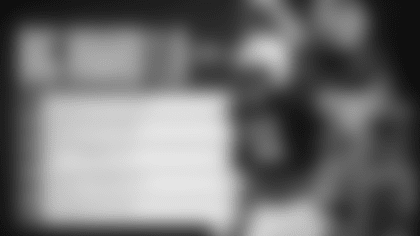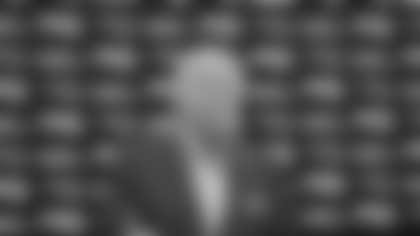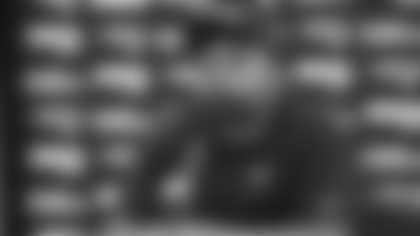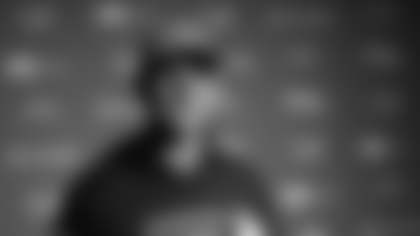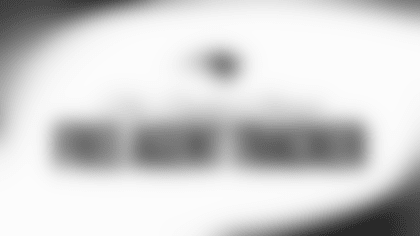HEAD COACH BILL BELICHICK
PRESS CONFERENCE
September 30, 2022
BB: I talked about this Wednesday, but I had a chance to show the team some of the great Packer players, coaches, [Curly] Lambeau, so we all know who Lambeau is. Saw him on the sideline. [Clarke] Hinkle, [Cecil] Isbell, [Don] Hutson, great. Some of the great players there. Just connecting the dots a little bit there. Lot of tradition there, lot of tradition going into Lambeau. Seeing those names up on the stadium. But, our focus today is really just finishing up preparations, situational football, third-down, red area, two-minute, tying up things like that. Goal line, short yardage at the end of the week. Ready to go out there and play our best football game. It's a good football team, they're a very good situational team. I don't think anybody is any better than Aaron Rodgers through the years. End of games, two-minute, four-minute, four-minute ahead, two-minute behind, all those situations. One play type situations, cadence. He just takes situational football to a much higher level. We always study them and of course we face them. We're dealing with all the things that we studied and watched him and the Packers do going back to when Mike [McCarthy?] was there. Of course now with Coach [Matt] LaFleur, but it just continues to be very impressive. Big play for them defensively at the end of the game with the two-point stop, beat Tampa last week. Good players, good kicker, clutch kicker. We're going to have to play well for 60-minutes. You can't play well for 59 and a half against them. That won't be good enough.
Q: Bill, do you allow yourself just a moment when you walk in and to look around and feel it before getting down to business?
BB: Well again, when you watch film, and they play at home, which they did against the Bears, right? But, plenty of other games to watch. Every time they show the scoreboard, there's [Don] Hutson, right? There's [Vince] Lombardi. There's [Curly] Lambeau. You see the names literally after every play, or actually, before every play. Before every play on the scoreboard shot. You can't help, but you know. There's a little bit of you know, some of our players, honestly, they don't know who some of these people are. I mean, this is 80 years ago or more. I mean, Lambeau started in what, 1921? About 100 years for him. Now he was there, what, 25 years? Mid 40's? I forget what his last year was, but somewhere in there. But, I'm just saying, it's just kind of, you see a lot of names, you see them on the stadium, see everybody talking about them. The stadium's named after him. Who is he? Who's [Don] Hutson? Bear Bryant, [Don] Hutson, [Curly] Lambeau, [Knute] Rockne, Notre Dame. I think there's a lot that these players and coaches, I've talked to the coaches about it too, you know, 'I've heard about it, where is this all kind of connected?' It's all kind of interesting. And certainly Lambeau, who took the Notre Dame box, which was a very, shift in the backfield, power football nobody ever split out, power play, after power play, after power play. That's what it was and then he got [Don] Hutson. Then he got [Cecil] Isbell and then he got [Clarke] Hinkle and then he very quickly became 'Air Lambeau.' Split [Don] Hutson out, you never saw that. So they actually had a split receiver, actually ran pass patterns, pass routes. [Cecil] Isbell was a, like they all were, quarterback-tailbacks, but he could throw. I mean, this guy was a tremendous passer and [Cecil] Isbell, [Don] Hutson connection was a good one, a very good one. I mean, the best in football. Then they got [Clarke] Hinkle and [Clarke] Hinkle was a great runner. Not that [Cecil] Isbell couldn't run, but not like [Clarke] Hinkle could. Then it became sort of, [Cecil] Isbell could throw, [Clarke] Hinkle could run and so it was the T from the single-wing, right? Instead of handing the ball from the T-formation, they handed it off from the single-wing formation. [Cecil] Isbell ran occasionally, but most of the time it was [Clarke] Hinkle, and then when they wanted to throw, it was [Cecil] Isbell throwing to primarily [Don] Hutson, but whoever. And then the whole [Don] Hutson and the draft story, like that's another tremendous story. The whole NFL draft really is a result of the [Don] Hutson situation. Which of course all these guys were drafted, or were involved in the draft, every single one of them. Why do we have a draft? [Don] Hutson. That's why we have a draft. We've got post mark, postage stamps and letters. Is he a Giant? Is he a Packer? Is he a Giant? Is he a Packer? Alright, he's a Packer. Betting on him was probably worth it. Greatest receiver in the history of football and certainly in that era. I'm sure he still has a pretty major role in all of the NFL history stats. That's always kind of fun to look back on it.
Q: Do you remember your first time going to Lambeau field?
BB: Yeah, preseason game. No actually that was in Milwaukee when I was with the Lions. I actually went there and scouted them. So it was two games in Milwaukee. If I have this right, it was two games in Milwaukee, and six games in Green Bay, or five games in Green Bay back in the 14 game season. Something like that. In Milwaukee, of course you had both teams at center field. The whole baseball setup. Which was fairly common back in those days. Now you had the other baseball stadiums like Memorial Stadium in Baltimore, or Cleveland Municipal Stadium where teams were on opposite sides. But like here in Fenway, Minnesota and Milwaukee. We had both teams on the same sideline. Again, that was another thing we saw today. That was a look at it, it was actually a game in Detroit. But it's like why are both teams on the same side of the field? But that was baseball stadiums. But it's quite, honestly it's quite a scene there. The whole, the community, it's kind of in a residential area. Then all of a sudden the stadium just like pops out in the middle of nowhere and here you are. That's Green Bay. But the fact that they played two games away from Green Bay for however many years they did that, it was quite a few, in Milwaukee. It's really a state team. See all the cheese heads. Its great.
Q: I know you're headed out to practice in a little bit. Are you expecting Mac [Jones] to practice today?
BB: Well we'll see. We'll see. I'm sure we'll both be watching very closely. See if he's out there. Oh you can't make it?
Q: I have to go talk to our man [Scott] Zo [Zolak].
BB: I gotcha. Hey he's the man. I understand. Well look I'm sure we'll get a report on it. I'm sure it'll be mentioned what happens out there. We'll see. I don't know. We'll see.
Q: You mentioned the other day that he had improved since the day before.
BB: Yeah of course.
Q: How much has he improved since last time we talked to you?
BB: We'll see.
Q: What do you need to see from Mac [Jones] to determine his physical readiness to play on Sunday?
BB: Ultimately, that will be a decision made by the medical people, in consultation with Mac [Jones], of course. Like we do with any player. He's no different than any other player. I mean he is, but I'm just saying the process is the same. Medical evaluation, talk to the player, and as a coach you, at whatever point, get the information that you get and you make a decision, if there's a decision to be made. If there's no decision to be made medically, then I'm out of. But if there's a decision to be made, if a player's at x percent, he can do this. The player feel likes he can do this. He's ready to play. Then I'll make a decision. Do I want this player at x percent? Or somebody else at, let's call it, 100 percent? But a lot of times it never gets to that point. Occasionally it does. If it does then that becomes my decision, in consultation with the player, and usually his position coach, or the staff.
Q: Is there anything at practice you would need to see from him to be comfortable enough to let him play if he were to be cleared on Sunday?
BB: Again, I don't know. I'd have to - we'll see. We'll see. Situations are different. So I think we'll just have to see how it goes. Not trying to run you guys around the block. It's just the truth. We'll see.
Q: How's he doing?
BB: Fine. I mean other than he's in the training room. But a lot of guys are in the training room. He's fine.
Q: You called it the other day a sort of day-by-day situation...
BB: Is that the word I used? I can't remember exactly how I described it. Yeah. Okay. I think you're right. I think you're right. Did I break a record on that, or?
Q: 12 times.
BB: Is that what it was? Nice, alright. I wasn't trying to do that. Just when you ask the same question, I give the same answer. Sorry.
Q: Does that mean though that this might not be a multi-week injury?
BB: Phil [Perry] I don't know. We'll just take it as it comes. Look, if you have an injury, you've had injuries. If you have an injury, you go out and do something. If you're okay, then you do more. If you're not okay, then you back off and you do a little less. Then you do more. Then you're okay, then you do more. How's it going to feel the next day after you do something? Well you're not going to know until the next day. Then you make a decision the next day. It's not a broken bone. It's not a fracture that you're dealing with. It's a different type of injury that -- I mean look, you guys took the [Ty] Montgomery story right? We had him out for the year. We had him out for eight weeks. He was never going to play again, and all that. He played in the opener against Miami. So I don't know. What was that? Somebody else can have the same injury, it could have healed at a different rate. We're all different. Each injury is a little bit different. So again, I'm not going to sit here and pretend like I have a magic wand, a crystal ball and I know exactly what's going to happen. Nobody knows. I don't know. He doesn't know. The doctors don't know. Take it as it comes and see what happens. It's the same with all of them. We have four, five, six guys like this every week, in varying degrees. Is it two days? Three days? Four days? A week? Is it eight days, 10 days? It's hard to tell. Until you actually get out there and perform at a level that is comparable to what a professional football player has to do. So walking around, going to the grocery store and pumping gas that's one thing. Going out there and competing on the football field with other elite professional athletes, that's different. So what heals okay? What's okay? What's competitively okay? Again, you're talking about well-conditioned athletes that heal quickly, generally speaking. I mean bones are bones. But guys that are in training, guys that are well-conditioned, that are healthy come back quicker than others of us, let's call it.
Q: The video that's been floating around is Dan Connolly's return. I'm wondering your memories of that play.
BB: Very unexpected. It's funny though. We just coincidentally had talked about that the week before. So say you have like seven kickoffs for the week let's call it. So you have a couple, maybe you have four on Monday, Wednesday, Thursday and then you do a couple on Friday. So you have six or seven a week. The majority of them are where you think your opponent is going to kick the ball in the return. Maybe you have two returns, three returns, whatever. Let's call it two returns. So you run a couple this way, a couple that way. Then you might throw in a random play from every week. So like a surprise onside kick. Then you throw in a kick that's a bloop kick. Then you throw in a squib kick. Then you throw in a kickoff after a safety. Then you throw in a kickoff from the 50-yard line where they try pooch it down to around ... You can't work on all 10 of those situations every week, right? So you do one this week. Then you do another one the next week. Then you do another one the next week. Cumulatively, now after six weeks, you're back at the beginning. So that's how you stay sharp on that. Now it might be something, onside kick, you work on every week. But the surprise onside kick is different. Some guys squib it. Some guys bounce it. Some guys bunt it. So there's different things you work on. But cumulatively, you see those things over a period of time. So that one was we had squibbed it. I forget if it was that week, or the week before. But it was recently. Then it actually happened in the game. But the whole point of the guy catching the squib kick handles it. The other guys get in front of him. Not stand there and watch him handle the ball. They get in front of him. Then the guys behind him come up in case he muffs it or it gets by him. Then the deep returners come up and protect him. Then they're usually faster than the guy who's getting the ball. So once Dan [Connolly] picked it up, they were able to scoot in front of him and create a little friction between the coverage. Dan just kind of hit the seam and rolled with it. But it was interesting how that play had actually popped up in practice. But that's sort of how you practice those things. Unless you know for sure, like this is a squib kick team, like they're going to squib kick at the end of the half, or if they have a lead, or whatever. Of course it was different then, because now it's easier to touchback. But yeah, randomly that play had come up previously. Then it showed up in the game and it's like I'm glad we practiced that. There's been some good memories. Then there's the memories back in what was it '02? Where they had their whole secondary out there. They had like four guys on injury reserve, and two of their guys were hurt and they came in here and [we] couldn't move the ball. [We] Couldn't get a first down. It was brutal. It goes both ways.


